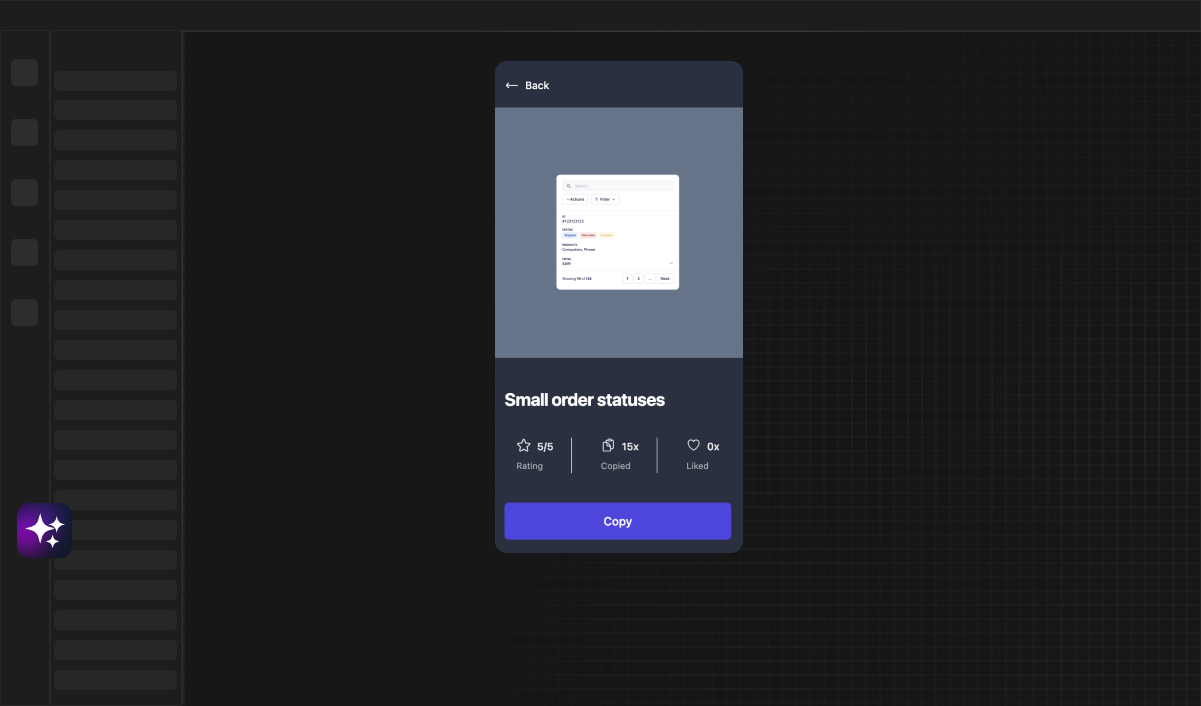
Web Developer
Language Settings in Bubble: Building Multilingual Apps
Explore how to create inclusive and globally accessible applications by mastering language settings in Bubble for building multilingual apps. Discover tips on structuring, managing translations, and optimizing for SEO on Framify.io.
Introduction to Multilingual Support in Bubble
Understanding the Importance of Localization
In today's interconnected world, building apps that cater to a global audience has become a necessity. Multilingual support isn't just a feature; it's a vital component of user inclusivity and business expansion. Bubble's platform supports app creators in achieving this through their comprehensive language settings, which allow for the building of multilingual apps with ease. Here, we will walk through the essentials of implementing language support in your Bubble applications, ensuring that your projects resonate with users from various linguistic backgrounds.
Localization goes beyond mere translation of text; it involves adapting your app culturally and contextually to different regions. By offering a localized experience, apps can significantly enhance user engagement and satisfaction, leading to higher retention rates and broader market penetration.
Key Concepts in Bubble's Language Settings
Bubble’s Built-in Features for Internationalization
Bubble provides a range of built-in features designed to assist developers in internationalizing their applications. Utilizing these tools effectively is critical to offering a seamless multilingual experience. Before diving into specific features, it's important to have a grasp of the fundamental concepts such as 'app texts' and 'language options,' which are central to internationalizing your app within Bubble.
Language settings in Bubble allow developers to define default languages and create a centralized database for all text elements. This centralization is a cornerstone of Bubble's approach to multilingual support, as it simplifies the management of translations across the entire application.
Structuring Your Bubble App for Multiple Languages
Organizing Elements and Text for Translation
When structuring your Bubble app for multiple languages, organization is key. You'll want to ensure that all text elements in your app are ready for translation. This involves using 'text keys' rather than hardcoded strings, which can then be mapped to the corresponding translations for each language.
Additionally, separating content from design and establishing a consistent naming convention for text elements and keys will streamline the translation process. This systematic organization is not only helpful for current development but also for any future updates that may introduce new languages or modify existing content.
Utilizing Bubble’s Conditional Formatting for Language Switching
Bubble’s flexible conditional formatting feature plays a crucial role in language switching. By setting conditions based on the user's language preference, you can dynamically display the appropriate language version of text elements and other content. This ensures that users experience a seamless transition as they navigate through your app in their chosen language.
You can take advantage of custom states and database fields to store user language preferences, making it possible to adjust the app's interface and content according to these settings. This approach fosters a personalized user experience, catering to a global audience with diverse language needs.
How to Implement Language Switcher in Bubble
Designing a User-Friendly Language Toggle Interface
Creating a language switcher in Bubble is essential for allowing users to select their preferred language easily. The design of this interface should be intuitive and accessible, often represented by flags, language codes, or dropdowns. When a user selects a different language, your app should react instantaneously, updating all text elements to reflect the user's choice.
The process involves setting up workflows that modify a user's language setting, which in turn, triggers the changes in the app's text elements. This requires careful planning to ensure a seamless transition between languages and a consistent experience across the entire application.
Managing Translations in Bubble
Best Practices for Translation Management
When it comes to managing translations, maintaining accuracy and consistency is paramount. Best practices include using professional translators who are native speakers, maintaining a glossary of terms, and considering cultural nuances. Also, version control is vital; keep track of changes to your base language texts to ensure translated versions stay up-to-date.
Moreover, regular reviews and updates of translations are necessary to adapt to changes in language use and to refine the quality of the localization. Checking translations in context within the app is also crucial, as it provides a clear picture of how the text fits with the design and function of the app.
Tools and Plugins to Streamline the Translation Process
Bubble's ecosystem offers various tools and plugins to streamline the translation process. These include translation services integrations and plugins that can handle bulk translations or assist in keeping different language versions of your app synchronized.
For example, Framify.io provides a plethora of automations that can help in bulk editing and managing databases, including option sets, which are often used for language selection. Leveraging these tools can save developers a significant amount of time and effort, enabling efficient management of multilingual content.
Dynamic Data and Multilanguage Considerations
Handling Dynamic Content Translation in Your Bubble App
Dynamic content presents its own set of challenges in multilingual apps. Translating user-generated content or data pulled from external sources requires an adaptable framework within your app. One approach involves utilizing Bubble's database fields to store translations of dynamic content, which can then be displayed based on the user's language preference.
Additionally, you might consider implementing a process for translating dynamic content on-the-fly. This might involve third-party translation APIs that can provide real-time translations for content that constantly changes or grows, such as user comments or posts.
SEO Optimization for Multilingual Bubble Apps
Ensuring Your Multilingual Content is SEO-Friendly
SEO optimization is critical for ensuring that your multilingual content reaches the target audience effectively. Each language version of your app should be optimized for search engines, incorporating relevant keywords and meta tags in the respective languages. This helps improve the discoverability of your app in local search results.
Moreover, it's important to structure the URLs for each language version appropriately. Using language-specific URLs can aid search engines in serving the correct version of your content to users based on their language preferences.
Testing Your Multilingual Bubble Application
Conducting Thorough Language-Specific Testing
Before launching your multilingual Bubble app, conducting thorough language-specific testing is essential to ensure that all features work correctly across different languages. This includes checking for layout issues that might arise due to text expansion or contraction in translation, verifying that all text is accurately translated, and ensuring that language switcher functions as expected.
Gathering feedback from native speakers and conducting usability testing in different languages can also identify areas of improvement. This step is not only about technical accuracy but also about ensuring the cultural relevance and appropriateness of your app's content.
Real-world Case Studies of Multilingual Bubble Apps
Success Stories and Learning Experiences from the Community
Examining real-world case studies of multilingual Bubble apps can provide valuable insights and inspiration. Many developers have successfully navigated the complexities of creating apps that serve a global audience, and their experiences highlight practical solutions to common obstacles.
Listening to success stories and learning from the challenges faced by others can guide you in avoiding similar pitfalls. The Bubble community is a rich source of knowledge, where developers share their journeys and the creative strategies they've employed to build inclusive, multilingual platforms.
Challenges of Building Multilingual Apps in Bubble
Common Pitfalls and How to Overcome Them
Building multilingual apps in Bubble comes with an array of challenges, from handling right-to-left languages to managing the translation of complex app features. Common pitfalls often involve underestimating the time required for thorough translation and localization, as well as failing to consider all areas where language settings might apply.
To overcome these challenges, it's important to plan ahead, allocate sufficient resources for localization, and engage with cultural consultants when necessary. It also involves anticipating user needs and testing extensively to ensure that language support is robust and reliable.
Future of Multilingual Apps in Bubble
Upcoming Features and Community Contributions
The future of multilingual apps in Bubble is promising, with continuous improvements and the introduction of new features on the horizon. The platform's commitment to accessibility and global reach means that it will likely incorporate more advanced tools for localization and internationalization.
Community contributions play a significant role in shaping these developments. Active engagement in forums, shared resources, and collaboration on public projects drive innovation and serve as a catalyst for new features that facilitate multilingual support.
Conclusion: Maximizing Global Reach With Your Bubble App
Final Thoughts and Best Practices Recap
In conclusion, embracing multilingual support in your Bubble app is a powerful way to maximize its global reach. By understanding the importance of localization, structuring your app correctly, managing translations effectively, and optimizing for SEO, you can create a truly inclusive platform that resonates with a diverse user base.
As we've discussed, following best practices such as organizing elements for translation, utilizing conditional formatting, designing user-friendly language interfaces, and conducting thorough testing will all contribute to a successful multilingual app. Remember, the goal is to not only speak the user's language but to connect with them culturally and contextually. With the tools and strategies outlined in this blog, you're well on your way to achieving that connection.
 Leer en
Español
Leer en
Español Leia em
Português
Leia em
Português


